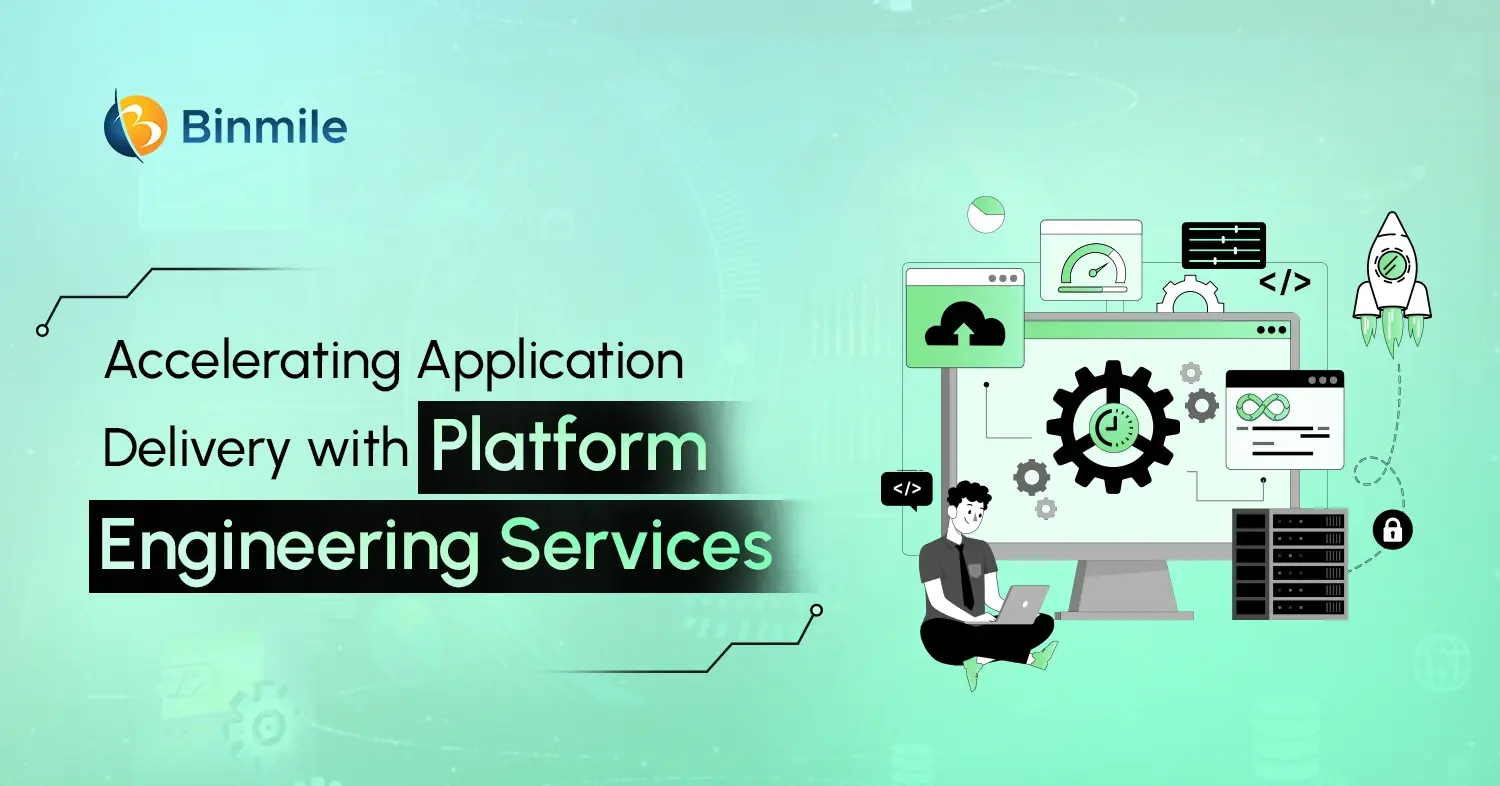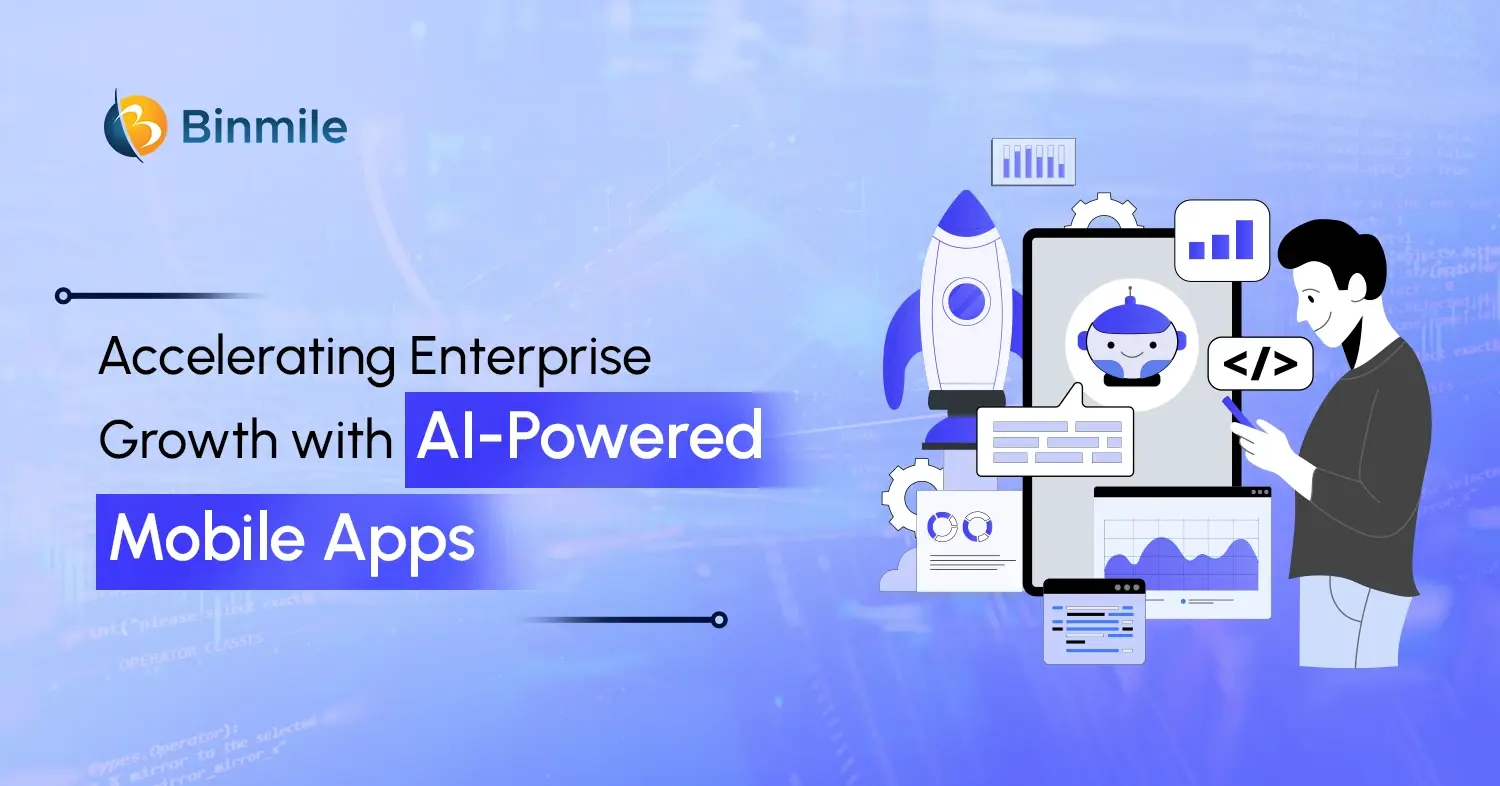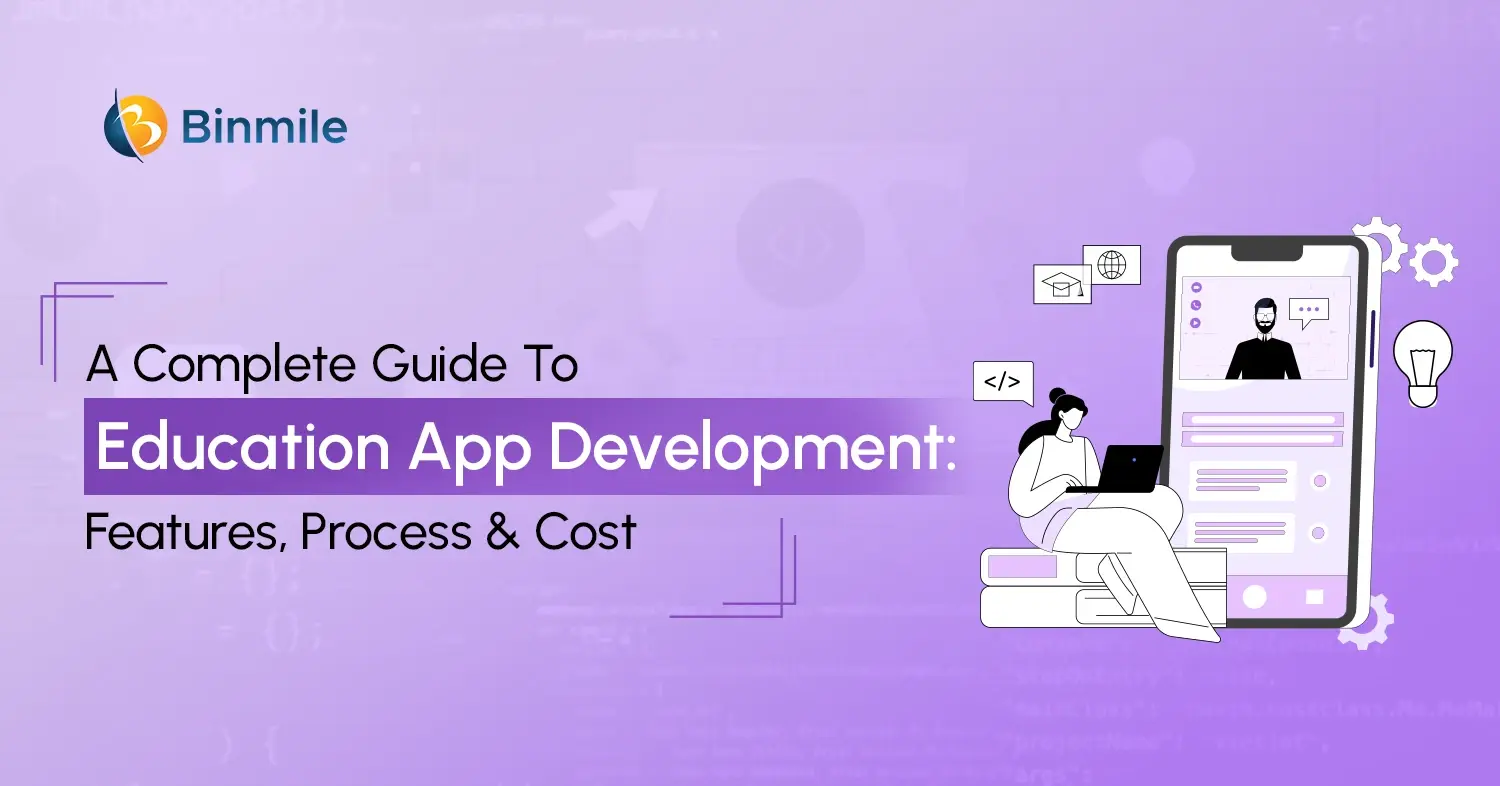Technology has transformed every facet of our lives, including the way we work, learn, eat, shop, and even how or what we watch. The OTT app development domain is one such market that is witnessing a shift in how users consume and interact with content on their devices. In addition, with global revenues from OTT TV expected to reach $210 billion by 2026, up from $106 billion in 2020, it is a clear sign for entrepreneurs and media companies to capture their share of this rapidly growing market. However, launching a successful OTT programming venture requires more than just good content—it demands strategic planning, technical expertise, and a laser-like focus on user experience. This strategic planning is not just a step, but a crucial foundation that will guide you through the entire development process, ensuring you are prepared for the challenges and opportunities that lie ahead.
Whether you’re a startup with innovative content or an established brand looking forward to extending your digital reach, this blog can help you. We’ll cover all the key components of custom mobile app development, from selecting the right technology to monetizing your app. In addition, we will discuss what an OTT application is, various OTT development business models, and share a few tips to help you create a platform that resonates with viewers and generates tangible revenue for your business.
Understanding OTT Applications: A Key to Successful OTT App Development
OTT, or Over-the-Top, applications are media streaming platforms that enable users to watch content over the internet, distinct from traditional cable, satellite, and broadcast services.
OTT Business Models: How OTT Platforms Make Money
OTT platforms leverage different OTT business models to ensure long-term platform growth and audience retention. These are:
- AVOD Model: This model enables platforms to generate revenue through advertisements while providing free access to users, making it a popular option for large OTT revenue models.
- SVOD Model: It ensures consistent income through subscriptions, suitable for platforms with high-quality, engaging content.
- TVOD Model: It operates on a pay-per-view basis, appealing to audiences seeking exclusive content on an OTT revenue model platform.
- Hybrid Model: These models employ multiple approaches, enabling platforms to tap into diverse revenue streams and adapt to changing market demands.
OTT App Development Guide: How to Build a Successful OTT App
Suppose you wish to capitalize on the popularity of OTT apps but are unsure where to start or how to do so. In that case, we’ll help you deliver an OTT application tailored to engage audiences and deliver unique content. Therefore, let’s explore a few actionable insights to ensure a seamless OTT Application development journey and maximize return on investment.

Step 1: Establish a Clear Vision and Market Niche
Begin by identifying the specific problem your app will address, whether it’s delivering niche content like regional films, specialized fitness programs, or exclusive educational series. Consider what differentiates your app from competitors—perhaps unparalleled content exclusivity or a superior user experience.
A well-defined vision ensures your app resonates with its intended audience and guides every subsequent development decision. Therefore, conduct thorough market research and get insight into underserved segments.
Step 2: Strategize Features and Technology Selection
Selecting the right features and technology stack is crucial to creating an OTT Platform app that meets user expectations. Among the top technologies for mobile apps, prioritizing seamless video streaming app Development with adaptive bitrate technology is essential to ensure high-quality playback across varying network conditions. You also incorporate personalized user profiles, enabling watchlists and AI-driven content recommendations, which enhance a robust search function and increase engagement.
For the technology stack, opt for scalable solutions like React Native for cross-platform frontends and Node.js for backend APIs. You would also need streaming protocols, such as HLS, paired with a content delivery network like AWS CloudFront, to ensure reliable performance. Remember, poorly performing apps are one of the core issues discussed, and choosing a robust tech stack is non-negotiable for handling traffic surges and ensuring long-term success.
Step 3: Prioritize Intuitive User Interface Design
Design an interface that emphasizes simplicity, allowing users to navigate effortlessly to their desired content and offering consistency across mobile, web, and Smart TV platforms. Additionally, consider incorporating features such as thumbnail previews and personalized homepages to enhance engagement significantly. Remember, users form their first impression quickly, so ensure your app is easy to navigate and that users can browse without needing permission.
Additionally, you can also research industry leaders like Netflix, whose intuitive layouts drive user retention. This will help you craft an interface that keeps viewers hooked.
Step 4: Select an Optimal Content Delivery Network
Delivering buffer-free streaming requires a robust content delivery network (CDN). CDNs like Amazon CloudFront or Fastly distribute content across global servers, minimizing latency and ensuring smooth playback. When selecting a CDN, consider its geographic coverage to align with your audience’s location and evaluate its cost-effectiveness in relation to your performance needs.
Exploring a multi-CDN strategy can further enhance reliability by reducing downtime risks and help you deliver a seamless streaming experience that keeps users satisfied.
Step 5: Execute Development and Rigorous Testing
Adopt an agile development approach, breaking the project into iterative sprints to accelerate progress and adapt to feedback. Security is paramount—implement Digital Rights Management (DRM) to safeguard content and HTTPS for secure data transfers. Ensure compatibility across iOS, Android, Smart TVs, and web browsers to reach a broad audience.
Comprehensive testing is non-negotiable, encompassing functional checks for features like playback and payments, performance evaluations under high traffic, and usability assessments to refine the user experience. Leverage OTT app development tools like Firebase to facilitate beta testing to identify issues early before they do the damage and correct them in a timely manner.
Step 6: Implement a Strategic Monetization Model
Choosing the right monetization strategy is key to your app’s financial success, so select carefully. You have options, such as Subscription Video on Demand (SVOD) models, like those used by Netflix, which provide steady revenue through monthly plans. Alternatively, you can also select Advertising Video on Demand (AVOD), which offers free content supported by ads.. Transactional Video on Demand (TVOD) enables pay-per-view or rental options.
We recommend a hybrid approach, such as a freemium model with premium tiers. A well-executed OTT App monetization strategy can drive substantial returns and broaden your appeal.
Step 7: Post Launch Maintenance & Optimization
Once your app is successfully launched, continue to refine it based on user feedback and assess its performance. Don’t forget, regular content updates and feature enhancements keep users engaged and bring potential users to your app. Additionally, optimizing app performance through periodic bug fixes, security updates, and UI/UX improvements ensures a seamless experience.
Leverage data analytics or other performance metrics to help refine content recommendations and personalize user interactions, fostering stronger retention rates. Moreover, implementing strategic marketing updates, such as promotions or partnerships, can expand your app’s reach and maintain competitiveness in an evolving market.
Power your streaming platform with a top-tier app developer, an expert in developing apps optimized for performance & built for growth!

How Much Does It Cost to Build an OTT App?
There is no fixed range for OTT platform development costs, as they vary depending on the app type. For instance, a basic OTT app with core features might cost between $25,000 and $50,000, while a fully featured OTT platform Development could range from $75,000 to $150,000 or even higher.
OTT App Development Cost Factors: What You Need to Know
From platform selection and UI/UX design to feature complexities, numerous factors must be considered for the app development process for your business, which significantly influence the cost of your custom OTT app development. Let’s consider OTT app development cost factors in detail:
1. Platform Selection
When choosing between Android, iOS, Web, Smart TVs, or cross-platform app development frameworks, consider that developing for multiple platforms may increase both development and testing efforts; choose wisely.
- Single Platform: $15,000 to $30,000
- Cross-platform (Flutter/React Native): $ 25,000 to $50,000
- Web + Mobile + Smart TV: $60,000 to $ 150,000
2. App Design & User Experience
UI/UX design influences user retention and engagement, including branding, layout, interactions, and accessibility. The more customized your design, animations, and branding are, the more you will likely pay for the OTT app development cost.
- Estimated OTT app development cost ranges from $5,000 to $25,000
3. Core Features & Functionalities
The features you choose to use in your custom app development for OTT also significantly impact your development cost. For instance, basic features include video streaming, search, user authentication, subscriptions, and playlists, which may be less expensive than the advanced ones, such as AI-powered recommendations, among others.
- Basic Feature Set: $20,000 to $50,000
- Advanced Features (e.g., recommendations, multi-language, offline downloads): $60,000 to $100,000
4. Content Management System (CMS)
CMS allows admins to upload, manage, and categorize content, so if you’re looking for a custom-built CMS, it may cost more than using a third-party system.
- Third-party CMS Integration: $5,000 to $15,000
- Custom CMS Development: $15,000 to $40,000
5. Video Streaming Infrastructure
Depends on the choice between live streaming, on-demand, or both. Requires CDN, adaptive bitrate streaming, and encoding. Remember, real-time streaming and scalability drive costs.
- Estimated Development Cost: $10,000 to $80,000, excluding ongoing hosting/CDN fees
6. Monetization Options
This includes subscription (SVOD), ad-based (AVOD), or pay-per-view (TVOD) models. Naturally, more complex monetization strategies, such as tiered subscriptions and coupon codes, increase the OTT platforms development price.
- Subscription-based Development Cost: $8,000 to $25,000
7. Security & Compliance
These two components are crucial for content protection and legal compliance, especially for premium content, and include DRM integration, secure login, GDPR compliance, and data encryption.
- Estimated Development Cost: $5,000 to $20,000
8. Backend Development & API Integrations
These two handle user data, content delivery, payments, and notifications, among other things. Although a scalable and high-performance backend is crucial, it can also be costly to maintain.
- Backend Development and API INtegration Cost: $15,000 to $60,000
9. Third-party Integrations
It can include various payment gateways (Stripe, Razorpay), analytics tools (Mixpanel, Firebase), CRM, and more, and are essential for a seamless viewing experience. However, each integration adds to development and testing time, ultimately increasing the costs of developing OTT platforms.
- Third Part Integration Cost: $5,000 to $20,000
10. Maintenance, Support, and Updates
For a smooth and uninterrupted viewing experience, it’s crucial to continually update, upgrade, and iterate your app based on user feedback. This includes post-launch support, bug fixes, new feature updates, and server maintenance, which can be a significant drain on your budget.
- Monthly: $2,000 to $5,000
- Annually: $20,000 to $50,000
Create a feature-rich digital experience—custom-built iOS & Android app for speed, security, and scalable architecture to future-proof your business!

Top 10+ Features Every OTT App Needs to Captivate Audiences
To create a seamless user experience and be a crowd-favourite OTT app, you must implement OTT platform features that enhance the viewing experience, solve user problems, and keep pace with evolving demands. So, include these features in your OTT app development:

- User Interface Enhancements
- Content Personalization
- Offline Viewing
- Cross-Platform Compatibility
- Personal Entertainment Library
- Multiple Language Support
- Advanced Search and Filtering
- Enhanced Playback Controls
- Live TV and Streaming
- Parental Controls
- Different Payment Gateway Integrations
- Social Interaction and Community Features
Closing Remarks on OTT App Development Guide
Technology will continue to bring transformative changes to the way we consume entertainment, and with the OTT app development market witnessing such a massive surge, it’s clear that OTT apps are here to stay. However, to fully realize its potential for OTT platform development , a structured approach is necessary. In its absence, organizations risk delays, budget overruns, and suboptimal user experiences. With strategic vision, technical excellence, and relentless focus on user experience, your OTT app can find its audience even in today’s crowded streaming marketplace.
Hopefully, this blog has given you an in-depth look into developing a solid foundation for your OTT streaming platform. Additionally, consulting an OTT app development services company can be of great help. These companies not just simplify OTT app creation with expert guidance, cutting-edge technology, and best practices, but they do more. From planning to post-launch optimization, these companies can help you To build OTT Apps scalable, high-performing platforms while you focus on what’s essential: growth.
Frequently Asked Questions
To Start your own OTT platform, first identify your niche, target market, and type of content. Next, select a trustworthy OTT app development partner to create a scalable platform with necessary features such as video hosting, user management, and monetization. Also, ensure compliance with licensing and content distribution laws.
The price of creating an OTT app in India will range from $15,000 to $50,000, with variation based on features, platform support, and the complexity of UI/UX. Local OTT app development teams provide affordable rates while ensuring high-quality output
Development of a Netflix-like OTT app would take anything from $100,000 to $300,000 based on functionalities like multi-profile support for users, recommendation through AI, encryption of content, and inter-platform compatibility. The high price is because of the need for advanced infrastructure and streaming technology.
OTT apps are becoming more popular with the increasing availability of content on-demand, customized viewer experience, and cheaper subscription when compared to broadcast TV. Improved mobile phones and cheaper internet have further boosted global OTT app penetration.
Key features of OTT apps include video streaming, authentication of users, tagging of content, search ability, payment gateway integration, and recommendation capabilities. In order to facilitate premium capabilities, features like offline download, syncing across multiple devices, and analytics dashboards are included when creating OTT apps.









